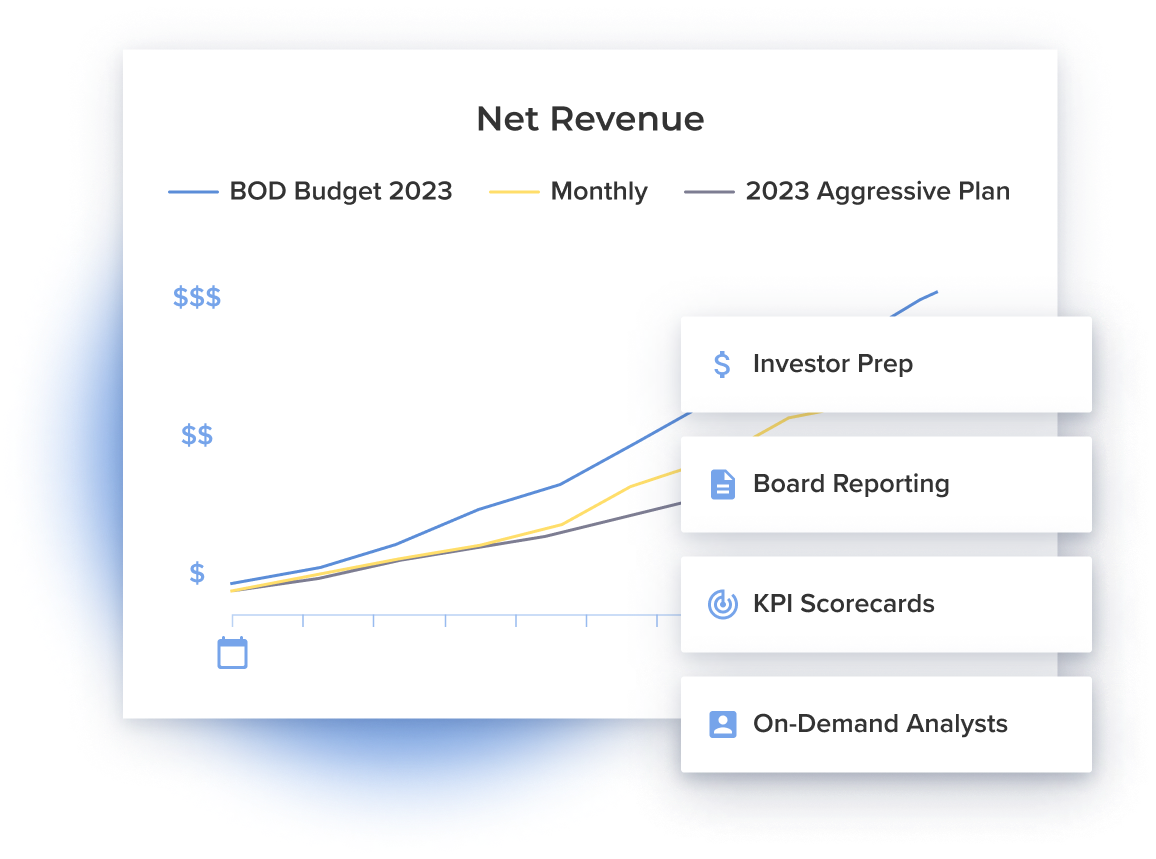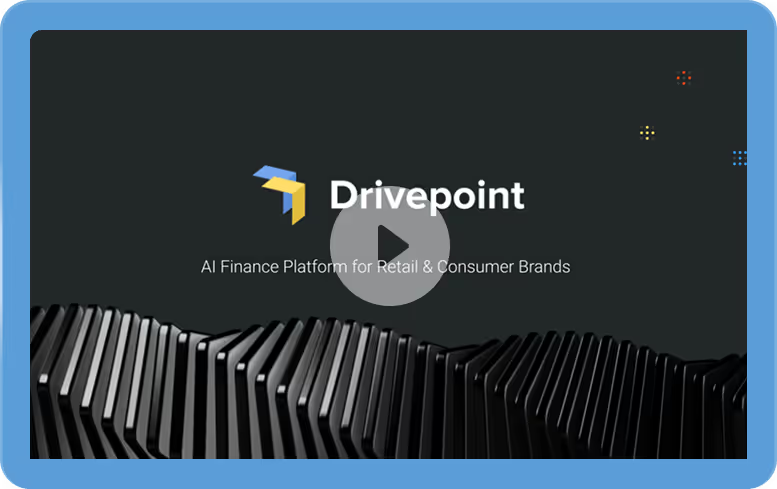5 Tips for Leveling Up Your FP&A Function Before Every Product Launch


In tech, predicting when you’re going to run out of money is generally straightforward. But when you sell a physical product, cash calculations involve a much trickier variable: the cost of goods sold.
Because risk is so much harder to quantify in the eCommerce space, you need a flexible and integrated strategic finance function to steer all product-based decision-making. Establishing a solid FP&A foundation from the start will help you manage your cash flow and ensure your whole team is on the same page before every launch.
We sat down with Matt Gunderson, CFO at Frameplay and former VP of Finance at Made In, to talk about how hard goods companies can calculate risk and confidently bet on new products.
How Made In learned to manage risk with strategic finance
When Matt came to the premium cookware brand Made In from a tech background, he instantly realized that hard goods required a more rigorous approach to FP&A. When you’re trying to predict which goods will sell and how much stock you need, risk management is no easy feat.
Well aware that any supply-chain miscalculation could have truly meaningful cash implications, Matt and his colleagues often disagreed over how to interpret their sales data when planning inventory. These conflicts forced Matt and his team to a key realization: It was time to level up Made In’s strategic finance function.
To do this, they built an in-house financial infrastructure that gave everyone access to all Made In’s data in a single place. Having this baseline infrastructure allowed Matt and his team to leverage the historical data they needed to quantify all the financial risks and opportunities associated with a new product rollout. This system helped them see what products they could profitably offer and how much stock they would need.
After Matt’s team analyzed the numbers to see how Made In had previously performed in categories they wanted to invest in again, everyone from product, business development, marketing, and PR had a clear baseline set of data from which to make decisions. As a result, managing cash flow and modeling future scenarios got much easier.
To quantify risk and plan successful launches at Made In, Matt used five strategic finance strategies that any eCommerce business can follow.
1. Develop a clear and collaborative framework for product-based decision-making
"Any time you launch a new product, you’re making a quantity bet and a dollar bet. To manage stay in-stock while keeping a steady balance of working capital, you need a reliable FP&A solution."
Without a centralized system to align around, stakeholders often disagree about which products to launch and how much stock to order. At Made In, everyone had different ideas about which cookware products to invest in. Should they listen to Google Trends? Should they consult actual chefs? Should they listen to the ops team’s calculations or the finance team’s calculations?
Matt says these questions can be answered much more easily with a centralized financial system and clear methodology for making and evaluating product bets.
To do this, the Made In team turned to strategic finance. Once up and running, their new system provided the data they needed to drive alignment among conflicting opinions and align on the most profitable path forward. They could now more accurately predict demand for any product based on years of historical data from different cohorts. “Whether we wanted to invest in a new knife or a stainless steel brine pan, we always felt like we were making an informed, risk-adjusted bet,” Matt says.
2. Establish your pricing and margin expectation from day 0
"You can’t make smart product and sales decisions until your finance team provides you with a fully loaded margin expectation."
Setting up clearly defined margin expectations as early as possible allows you to set the best terms with your manufacturing partners and better positions you to track and quantify that variable as your business expands.
Matt’s seen how hard product teams work to build and market the best products, but he’s also seen how difficult these dreams are to realize without properly communicated expectations.
From the outset, the finance team should specify to the product team what contribution margins they consistently expect from product launches. According to Matt, the best margin expectation will account for:
- Actual product price (COGS)
- Cost of development (tooling, etc.)
- Shipping (to you and to your customer)
- Tariffs
- Expected discounts, especially if you’re wholesaling
When you give your product team a clear-eyed sense of how each launch fits into your business’ profitability timeline, they can plan with every expense in mind.
3. Prioritize short-term LTV to start
"Don’t get ahead of yourself on your LTV math. Focus on near-term goals until you have the historical data to back up longer-term bets."
Jumping from encouraging retention metrics to long-term LTV investments could burn cash unnecessarily. Matt cautions against overspending — even on your most loyal customers — when you don’t have the hard numbers to justify the investment.
“You can’t get a realistic sense of long-term LTV until your balance sheet is populated with years of historical data,” he warns. Instead, he recommends basing LTV and payback calculations on near-term customer expectations. Rather than designing your LTV break-even around years' worth of repeat purchases, design it around customers’ first few weeks and months with your brand. This will reduce the payback period and preserve working capital.
He also suggests carefully segmenting calculations for your new and returning customers. Shopify’s data is a good place to start, but he recommends looking at your customer data across all channels to truly understand which audience segments are the most profitable. The more data you have, the stronger your predictive retention models will be.
This tactic proved especially fruitful at Made In, where returning customers were the most likely demographic to purchase a new product in the first 60 to 90 days after its launch. Knowing this, Matt and his team used this historical data to project sales and plan purchase orders accordingly. For products that promised to be popular, they planned restocks ahead of time to extend the launch’s success as long as possible.
4. Help marketing determine your highest ROI channels and invest in them early
"In the early days, it's all too easy for the finance team to look only at high-level metrics — like overall return on ad spend — and then greenlight more marketing investment. But figuring out how to work with your marketing team to identify and measure top channels cross-functionally builds a significantly better relationship and strategic dialogue.”
Marketing teams have a vast universe of options to allocate their spend — an influencer here, a podcast there — but without the right measurement, they’re unlikely to land on a successful strategy.
Instead of guessing at what might work, Matt suggests using your sales and marketing data to inform your marketing team’s efforts.
“Figure out how to help the marketing team measure your marketing ROI immediately,” Matt advises. “When you can definitively attribute marketing dollars to purchase activity, you’ll be able to ensure those dollars are truly driving top-line.”
By developing a cross-functional system for measuring marketing success, Made In’s finance team not only improved internal communications but set themselves up to scale as smoothly as possible. Whenever they launched a new product, they immediately knew the most dependable channels they could use to cost-effectively promote it, as well as the new ones they were ready to start testing.
5. Use Drivepoint to build forecasts that can stand up to any curveball
"Drivepoint built a solution truly tailored to hard goods brands and their finance teams. When working capital is your lifeblood, Drivepoint provides exactly the data infrastructure you need to scale."
After building dashboarding and reporting tools from scratch, Matt values what a strategic finance platform can do for a growing business. He’s especially impressed by Drivepoint’s ability to adapt its forecasting to any unforeseen scenario. As he learned early into his tenure at Made In, it’s essential to have a flexible FP&A model that can illustrate the impact of every uncertainty.
“Events like COVID have the potential to change your company overnight,” Matt says. “But having a model like Drivepoint that allows you to reforecast at the drop of a hat really simplifies your decision-making.”
That’s why scaling consumer brands (including VKTRY, Graza, Oats Overnight, and more) use Drivepoint to:
- Access data from all sales channels in a single, user-friendly interface
- Accurately forecast (and reforecast) their financials with near-100% accuracy
- Identify hidden growth opportunities
- Create shareholder reports that ensure stakeholder alignment
Want to see what Drivepoint can do for your team’s quantitative decision-making? Schedule a demo today.
Subscribe to our newsletter

Ready to see what you can do with Drivepoint?
Learn how other consumer and CPG brands are driving margin and cashflow with Drivepoint








